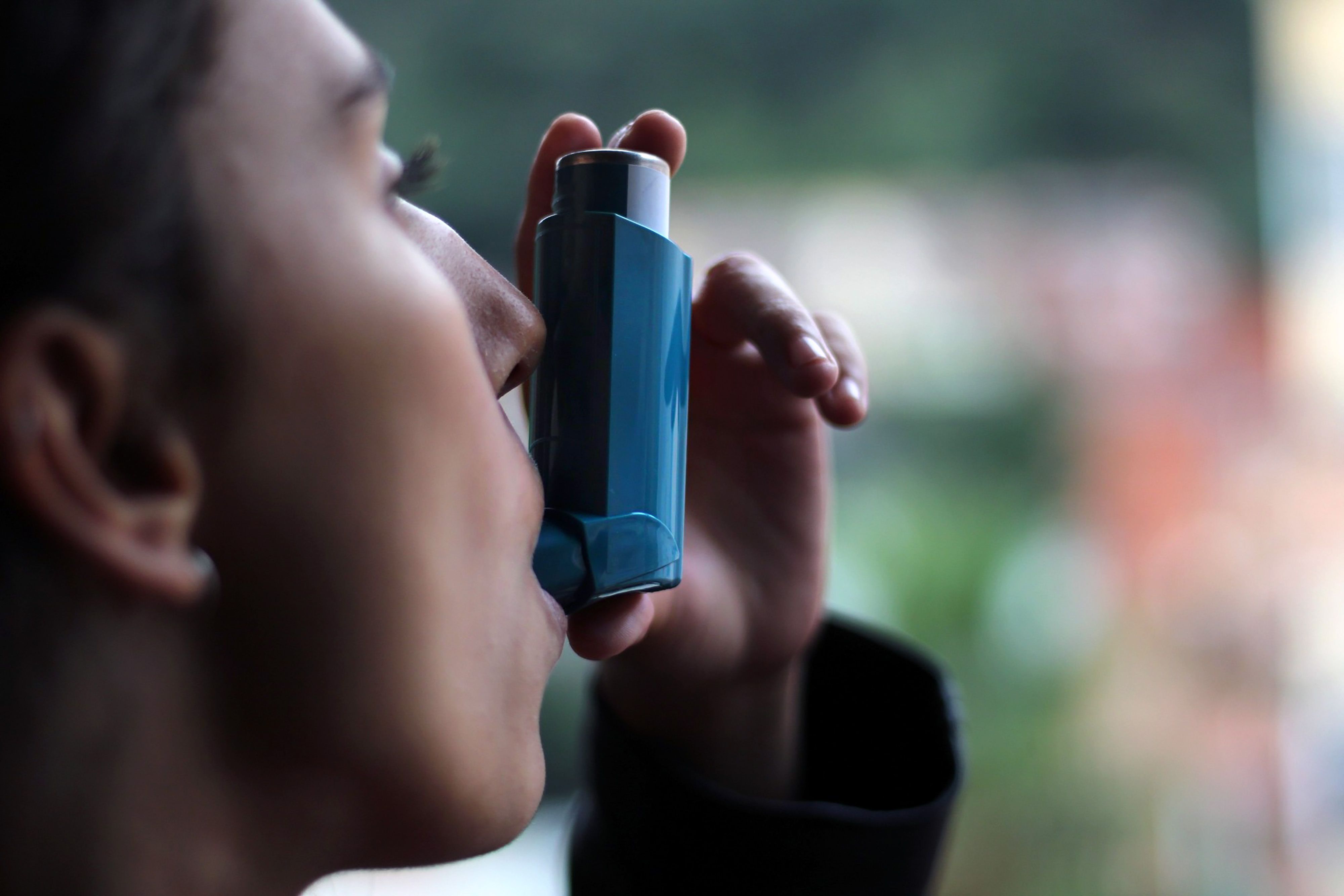
- Center on Health Equity & Access
- Clinical
- Health Care Cost
- Health Care Delivery
- Insurance
- Policy
- Technology
- Value-Based Care
Analysis Highlights Potential Gaps Between Popularity, Credibility of Asthma-Related TikTok Videos
The researchers found that popularity of videos did not necessarily correlate with the quality of information provided in the video.
As social media platforms continue to be leveraged to disseminate health and wellness information, researchers of a new study have explored the impact of TikTok videos on asthma information, highlighting the tricky balance between viewer engagement and the credibility of the videos they interact with.
A patient uses an inhaler to prevent an asthma attack | Image Credit: © DALU11 - stock.adobe.com

Among 2 batches of the top 100 liked videos using the hashtag #asthma, the researchers assessed engagement based on creator type and associated credibility of the provided information, publishing their findings in Cureus. Across the videos, physician-created videos accounted for a significant proportion, although engagement with the videos varied.
“The surge of health information on platforms like TikTok has broader implications for patient education and treatment adherence. Historically, patient-physician interactions, brochures, and community health sessions were the cornerstone of patient education. Now, with easily digestible video snippets becoming increasingly influential, there lies both an opportunity and a challenge,” detailed the researchers. “The opportunity is to leverage this platform to enhance patient understanding, ensuring that individuals are better informed about their conditions, potential treatments, and management strategies. The challenge, however, is ensuring that the tidal wave of information is both accurate and clinically sound.”
The researchers analyzed videos on the social media platform posted in June 2023 and again in January 2024, finding that popularity of videos did not necessarily correlate with the quality of information provided in the video.
The group highlighted the risks of misinformation on how someone manages their asthma or how they perceive the pathophysiology of the disease. In particular, the researchers warned about the potential influence of popular opinions on social media, rather than scientific evidence, on treatment adherence.
In their analysis, the researchers determined quality using DISCERN scores—rated on a scale of 1 to 5, with a higher rating correlating to higher quality.
Videos by nonphysicians, comprising of 31% of videos, accounted for the most views, garnering an average of more than 128,000 views. Meanwhile, physician-made videos, accounting for 35% of videos, had an average of 84,000 views. However, despite the marked difference in video views, the mean DISCERN scores between the 2 video types did not differ significantly, with a score of 1.201 for nonphysician videos and a score of 1.234 for physician-made videos.
“The exploration of asthma-related content on TikTok has unveiled profound insights, necessitating a deeper contemplation on the interplay of healthcare information, audience preferences, and the digital revolution,” explained the researchers. “At the very outset, the divergence in viewership between physician and nonphysician content creators strikes a chord. Despite physicians, with their deep-rooted medical expertise, contributing to 35% of the content, nonphysicians, armed with possibly diverse layman perspectives, garnered significantly higher views.”
Notably, videos created by private companies had an average of 355,000 views but yielded a DISCERN score of 1.194, suggesting a potential compromise in the quality of the videos, the researchers explained.
However, between the 2 analysis points, engagement—comprising of metrics including views and likes—decreased for videos created by private companies. The decrease, said the researchers, could be a result of shift in viewer preference or the effectiveness of content. The trend analysis also showed that between the 2 time points, engagement increased for videos created by physicians and other health care professionals.
Reference
Irfan B, Yasin I, Yaqoob A. Breath of change: evaluating asthma information on TikTok and introducing the video health information credibility score. Cureus. 2024;16(2):e54247. doi:10.7759/cureus.54247
Depemokimab Reduces Exacerbations Regardless of Baseline Asthma Control
July 3rd 2025Depemokimab significantly reduces asthma exacerbations, benefiting patients regardless of their baseline asthma control levels. A biologics license application for depemokimab is currently being reviewed by the FDA.
Read More
Advancements in Asthma Treatment: Next Steps and Insights From Clinical Development of Rilzabrutinib
August 1st 2024Leda Mannent, MD, global project head, Immunology and Inflammation, Sanofi, outlines future steps for the clinical development of rilzabrutinib, as well as promising data to advance to phase 3 studies.
Read More
Depemokimab Reduces Exacerbations Regardless of Baseline Asthma Control
July 3rd 2025Depemokimab significantly reduces asthma exacerbations, benefiting patients regardless of their baseline asthma control levels. A biologics license application for depemokimab is currently being reviewed by the FDA.
Read More
Advancements in Asthma Treatment: Next Steps and Insights From Clinical Development of Rilzabrutinib
August 1st 2024Leda Mannent, MD, global project head, Immunology and Inflammation, Sanofi, outlines future steps for the clinical development of rilzabrutinib, as well as promising data to advance to phase 3 studies.
Read More
2 Commerce Drive
Cranbury, NJ 08512
AJMC®
All rights reserved.